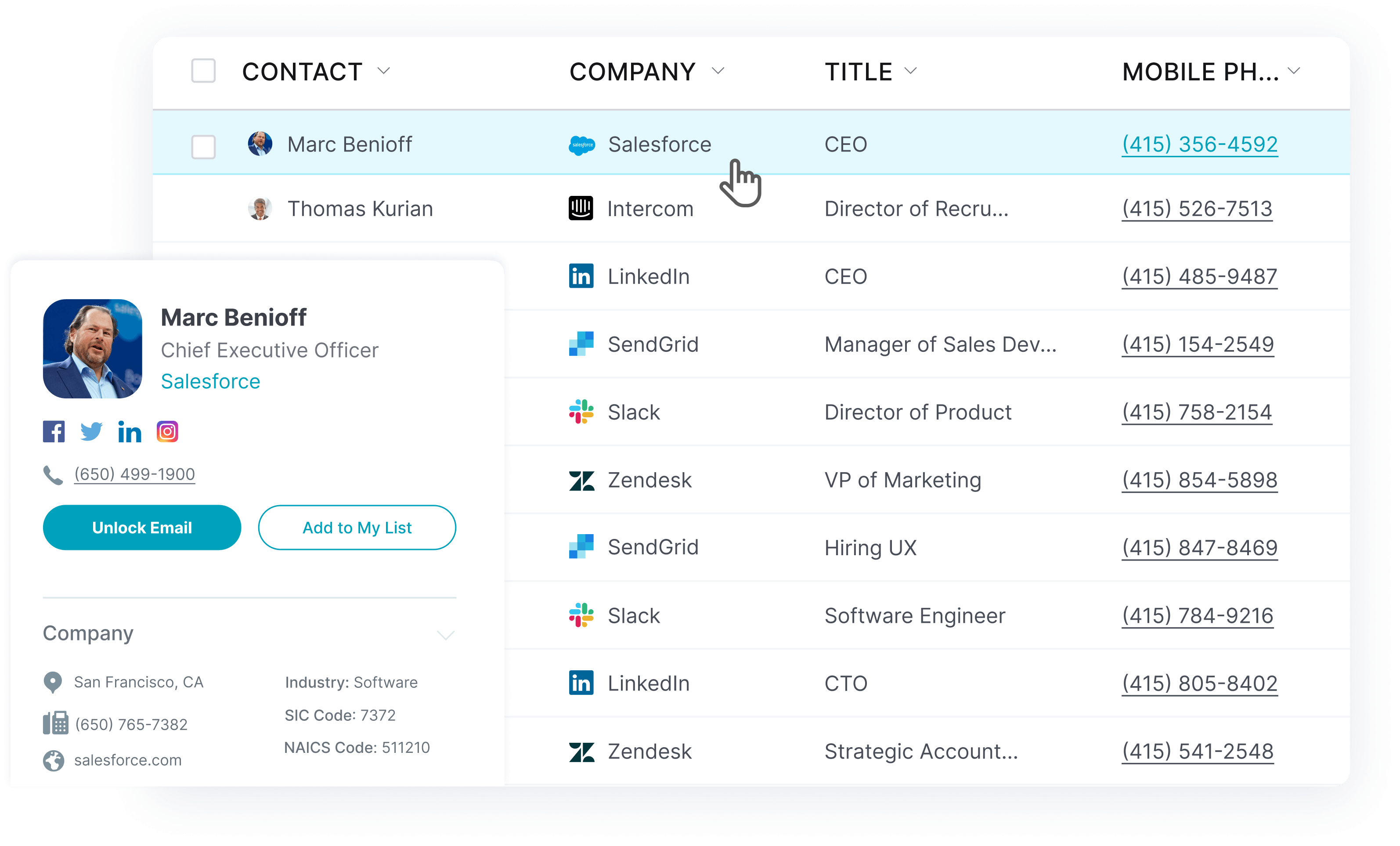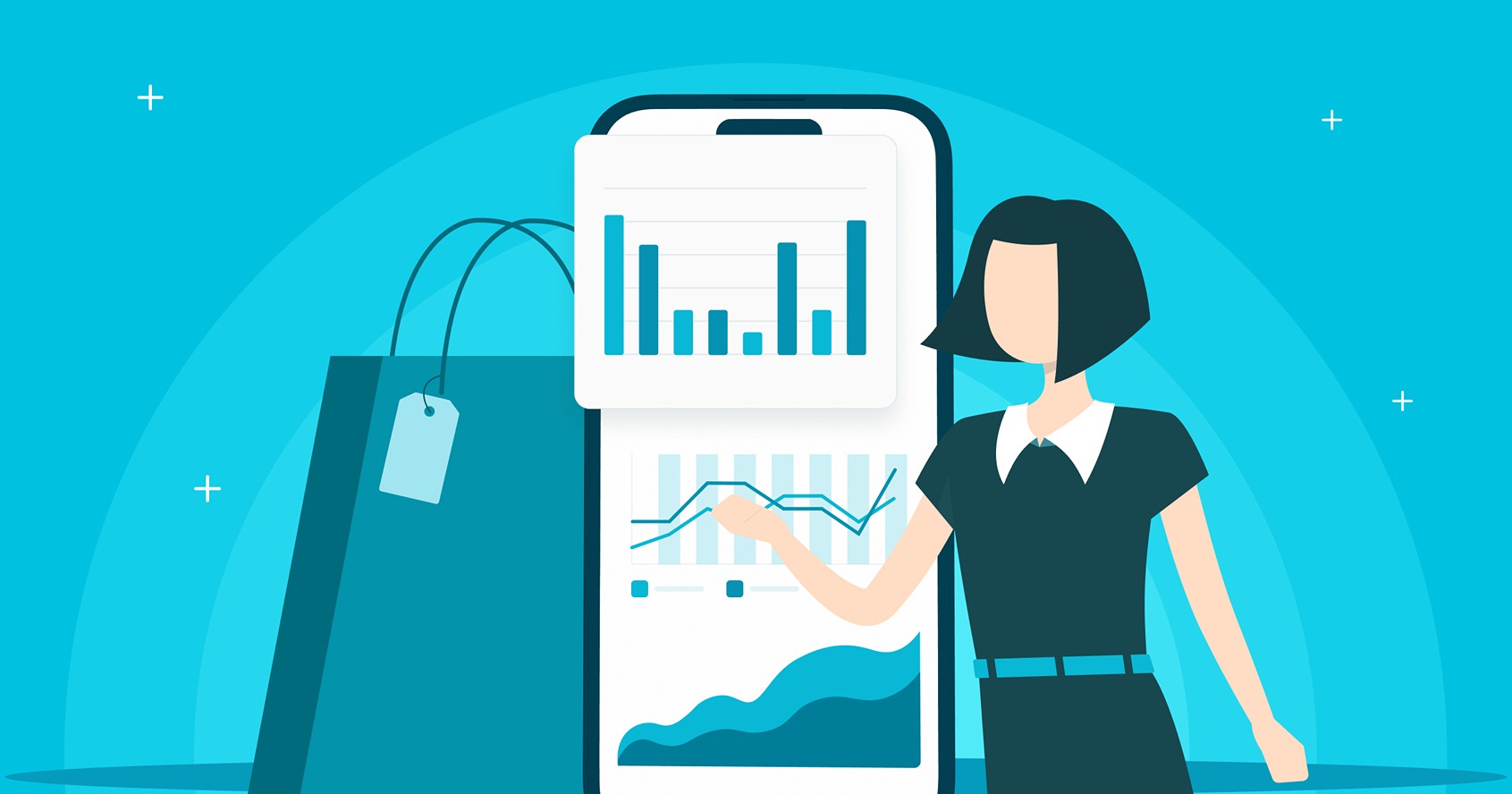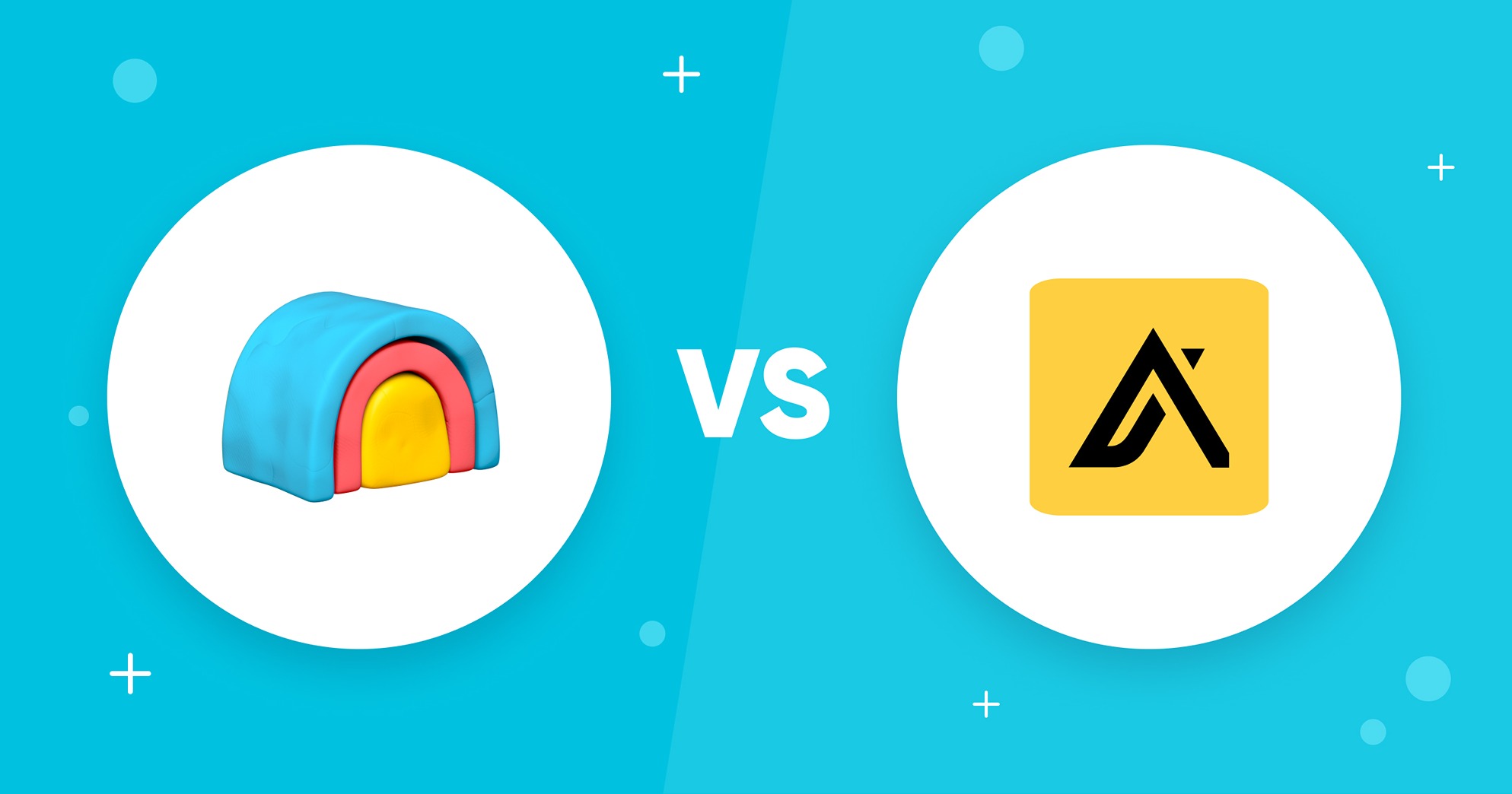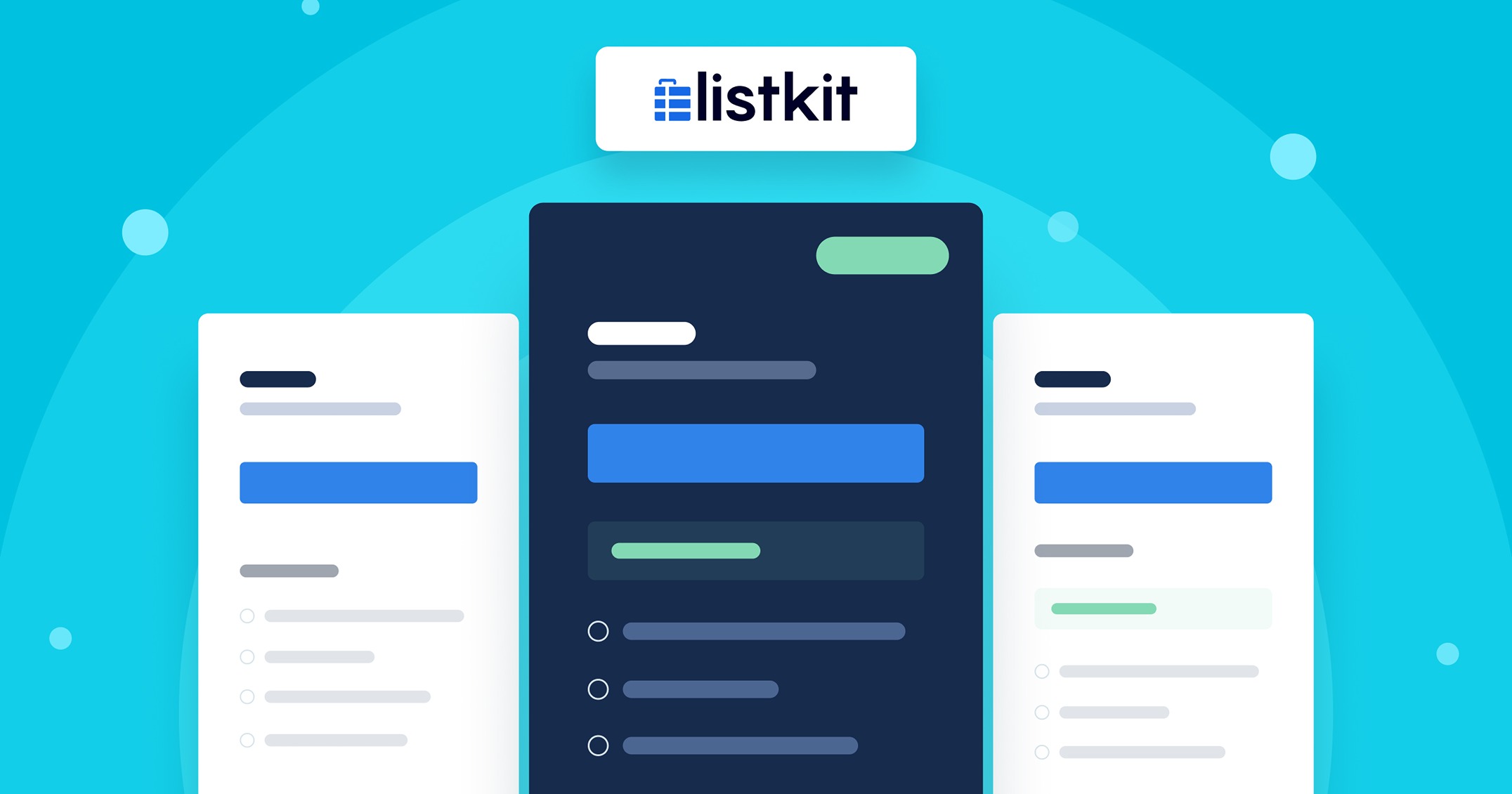It’s no secret that lead generation is a key component for driving pipeline growth. After all, your leads are the lifeblood of your business! But how much does it cost to acquire a quality lead? What are your lead costs per campaign or acquisition channel?
This article explores how to calculate your cost per lead (CPL). It breaks down exactly how to get an accurate estimate for each campaign or your overall process. You’ll also discover powerful secrets that can help reduce your CPL and maximize ROI. Let’s dive in!
🔥 Hot tip: Decrease your lead generation costs by unlocking verified contacts worldwide with high-accuracy B2B prospecting tools like UpLead. Try it free.
What is Lead Generation?
Lead generation is an essential step of the sales process. Skilled sales and marketing professionals know several ways to generate leads, including email campaigns, using sales intelligence platforms, hosting events, focusing on content creation, or using direct messaging. If your team can properly identify and nurture leads, they’ll be well on their way to sales success.
Types of Lead Costs
Lead costs can have a significant influence on your sales and marketing strategy. Understanding different types of leads, their associated costs, and how to optimize your resources is instrumental in driving more revenue for your company.
- Marketing: This includes website content, blogs, social media marketing, and marketing team compensation costs
- Advertising: The cost of placing ads, whether online via platforms such as LinkedIn, or more traditional mediums, such as print
- Sales: Costs associated with the sales process, including compensation for your sales team
- Sales software: The total cost of CRM, sales intelligence, and other sales automation tools
How Do You Calculate Cost Per Lead?
CPL is a measurement of exactly how much each B2B lead costs. Calculating your cost per lead (CPL) will help you understand your marketing campaigns’ efficacy and allow you to gauge your return on investment.
To calculate your CPL, divide your total lead generation costs by the number of new leads. For example, if your B2B SaaS startup spent $20,000 in acquiring 100 sales leads through paid LinkedIn ads and blog content, your CPL would be $200. By measuring CPL, your sales and marketing team can track performance over time and make informed decisions about future campaigns and investments.
Average Cost Per Lead (CPL)
When determining a marketing strategy, understanding your average cost per lead (CPL) is an essential piece of the puzzle. A recent study from the DeTorres Group estimated that overall CPL averages around $198. The GoConvert website calculates a CPL average closer to $119. However, this number can vary significantly between industries, channels, and company sizes. Factors such as the size of your company or customer base and the duration and complexity of your campaigns should be considered when setting cost expectations. While CPL can also depend on external conditions beyond your control, such as market trends or competition levels, taking the time to do research and identify industry-specific metrics can help you form effective and realistic plans for controlling costs.
Average Cost Per Lead by Industry
Lead costs can vary from industry to industry. On average, leads are more expensive in certain fields, such as IT and healthcare, than in other industries, such as education and retail. When it comes to understanding what makes a good CPL for your type of business, the following breakdown of average CPLs by industry is an excellent starting point. However, this data alone shouldn’t be used as a defining factor when allocating resources or setting your sales budget. Other factors, such as your pricing model and niche, can influence what a good CPL benchmark might look like for your organization.
| Industry | Cost Per Lead |
| IT | $208 |
| Healthcare | $162 |
| Financial Services | $160 |
| Media & Publishing | $108 |
| Consumer Products | $105 |
| Marketing | $99 |
| Education | $55 |
| Retail | $34 |
Average Cost Per Lead by Lead Generation Channel
Different lead generation channels involve varying costs, so it makes sense that your cost per lead will differ depending on which method you use. Despite the cost of events and trade shows being higher than other lead generation channels, they remain popular. Live events offer the opportunity to foster engaging conversations. Traditional mediums such as TV/radio advertising and print media are still powerful methods of scaling brand awareness, albeit at a more expensive average cost per lead. On the other hand, digital marketing solutions can provide businesses with further reach at a lower cost. Social media, email marketing, SEO, and LinkedIn ads are some of the most widely used digital marketing methods. Overall, digital solutions are the best choice for businesses looking for the right balance between cost and impact.
| Channel | Average Cost Per Lead |
| Events & Tradeshows | $811 |
| Traditional Advertising (offline) | $619 |
| Search Engine Marketing (SEM) | $110 |
| LinkedIn Ads | $75 |
| Webinars | $72 |
| Social Media Ads | $58 |
| Email Marketing | $53 |
| SEO | $31 |
Average Cost Per Lead by Company Size
The cost of acquiring leads is an important metric for all companies, big or small. Larger enterprises generally have a higher average CPL than their smaller counterparts. Bigger companies tend to sink more marketing dollars into their lead-generation efforts. On the other hand, smaller companies have fewer resources at their disposal and must develop highly effective strategies that don’t require hefty investments. Companies trying to scale with limited finances strive for lower average CPLs by implementing low-cost lead-generation solutions.
| Company Size | Average Cost Per Lead |
| 1,001+ employees | $349 |
| 201-1,000 employees | $212 |
| 51-200 employees | $180 |
| 2-50 employees | $147 |
Average Cost Per Lead by Business Revenue
Companies generating large revenues usually have a higher marketing budget and will invest more in broad lead-generation efforts. On the other hand, smaller companies tend to optimize their lead generation efforts with more selective lead targeting, resulting in a lower cost per lead.
| Company Revenue Size | Average Cost Per Lead |
| $500 million+ | $429 |
| $10 million – $500 million | $179 |
| $1 million – $10 million | $185 |
| Under $1 million | $166 |
How Many Leads Does Your Business Need?
When creating your sales process, it’s important to consider how many leads your business needs within a given timeframe. Having a clear, quantifiable goal in mind will help focus your efforts and ensure you have realistic expectations for a successful outcome. The number of leads you need will also play a role in the systems your team will use to assess and organize your data quickly. It’s important to prioritize some leads and filter out those not worth pursuing immediately.
Use the factors below to calculate how many leads you need to reach your revenue goals:
- Target Revenue: Your revenue goal for a given period
- Average Sales Price (ASP) or Average Contract Value (ACV): Total amount of money earned per sale or signed contract
- Opportunity Win Rate: Ratio of opportunities that turn into customers
- Lead-to-Opportunity Conversion Rate: Ratio of leads that turn into opportunities (prospects with a high likelihood of conversion)
Now, let’s take these metrics and work through an example together:
- Let’s say you have a target revenue of $300,000 for the quarter.
- Your ASP or ACV for the quarter is $10,000.
- Take your target revenue and divide by your ASP or ACV to get the number of deals you need to meet your revenue goal: $300,000 / $10,000 = 30.
- Let’s say your opportunity win rate is evaluated as 1 in 8, which means out of every 8 highly qualified leads (opportunities); you can turn 1 into a customer.
- Take your opportunity win rate and multiply it by your number of deals to get the number of opportunities you need: 8 x 30 = 240.
- Let’s say your lead-to-opportunity conversion rate is 5, which means that out of every 5 leads, you can convert 1 into an opportunity. Take your opportunities and multiply it by your lead-to-opportunity conversion rate: 240 x 5 = 1,200,
- As a result of this calculation, you know that to reach $300,000 in your target revenue for the quarter, you need about 1,200 leads or more.
Use UpLead to Decrease Your Lead Costs
With UpLead, you can decrease your lead generation costs by unlocking verified, actionable contacts worldwide. The platform’s reliable database includes over 160 million B2B contacts. Your team can leverage UpLead’s filtering capabilities to zero in on the leads who are most likely to be interested in your product, ensuring you’re not wasting time or money on low-quality leads. Plus, with the platform’s 95% data accuracy guarantee, you can trust that your leads come with valid and complete contact information. Try UpLead for free today to streamline your lead generation process and get the most value for your money!
Lead generation doesn’t have to be all that painful. With UpLead, you can easily connect with high-quality prospects and leads to grow your company.

More Ways to Lower the Cost of Leads
The cost of acquiring leads is a major consideration for sales and marketing teams, especially as companies focus more on ROI in their lead generation strategies. It’s becoming increasingly important to take every measure possible to ensure your dollars deliver the highest return possible. Below are some additional ways to reduce the cost of leads without sacrificing quality and help your sales team unlock greater success from the same budget.
Create an Ideal Customer Profile
Creating an ideal customer profile (ICP) is a powerful way to lower the cost of acquiring leads. Building your ICP helps you target prospects with a more specific offering. You’ll avoid wasting resources on leads that might not be interested in your offering. When building an ICP, you should consider key factors, such as the prospect’s industry, budget, location, and job function. Consider your ideal customer’s challenges; it will help you present a solution to their pain points. Keeping an ideal customer profile at the center of your lead acquisition process ensures you’re not wasting time and money on the wrong leads.
Double Down on Inbound Marketing
Studies from Mashable have found that inbound marketing leads are 62% less expensive than outbound marketing leads. Your inbound marketing content will most likely appeal to people already interested in your offering. They are more likely to be marketing qualified leads and are, therefore, more likely to enter your sales funnel.
Some of the most common inbound marketing tactics include:
- Blog posts
- E-books
- White papers
- SEO
- Social media
Track and Optimize Channel Performance
Tracking and optimizing channel performance allows for a more strategic marketing approach. You can reduce costly investments while boosting ROI by leveraging data-driven insights on each channel and crafting campaigns tailored to your target audience’s preferences. Digital tools can assist in the lead generation and management process and make tracking leads throughout the customer journey easier. Overall, tracking which channels perform best—and why—will help your team optimize their budget and achieve maximum conversion rates.
Use Free Lead Generation Tactics
If you need to acquire new leads on a tight budget, focus on free lead-generation tactics. While there can be hurdles like low engagement rates and deliverability issues, email marketing is an effective approach to reach out to customers for free. It’s also possible to leverage social media for lead acquisition. Developing organic content around key topics can help establish your business as an expert. When done well, attracting leads organically can be even more powerful than direct selling.
FAQs About Lead Costs
Below are a few of the most frequently asked questions about the cost of generating leads.
Determining your CPL can be useful when comparing the costs and returns associated with different campaigns and platforms. For example, you launched two email marketing campaigns targeting existing customers and potential prospects. Imagine that each had a total cost of $1000. If the first campaign generated 20 leads and the second only 10, your CPL was $50 for the successful campaign and $100 for the less successful one.
It can be difficult to determine what your CPL should be. The truth is that there’s no definitive answer—the right number depends on a variety of factors, such as your industry, your company’s pricing model, how many marketing channels you use, the size of your company, and its overall revenue.
What You Need to Remember About Lead Costs
When analyzing your lead generation costs, it is essential to consider the unique elements of your business model. Factors such as industry, company size, and desired revenue must be considered to determine what works best for your business.
Several ways to decrease your CPL include creating an ideal customer profile (ICP) and optimizing email marketing campaigns with valuable, relevant content.
Prospecting tools like UpLead will also help you automate the lead generation process by providing high-quality leads at the scale you need. You can reduce your CPL while generating the leads that are most likely to convert. Try UpLead for free today.









